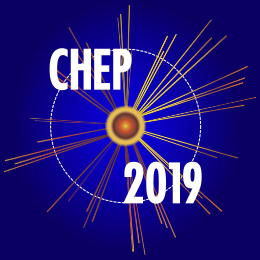Speaker
Description
The Project 8 collaboration seeks to measure, or more tightly bound, the mass of the electron antineutrino by applying a novel spectroscopy technique to precision measurement of the tritium beta-decay spectrum. For the current, lab-bench-scale, phase of the project a single digitizer produces 3.2 GB/s of raw data. An onboard FPGA uses digital down conversion to extract three 100 MHz wide (roughly 1.6 keV) frequency regions of interest, and transmits both the time and frequency domain representation of each region over a local network connection for a total of six streams, each at 200 MB/s. Online processing uses the frequency-domain representation to implement a trigger based on excesses of power within a narrow frequency band and extended in time. When the trigger condition is met, the corresponding time-domain data are saved, reducing the total data volume and rate while allowing for more sophisticated offline event reconstruction. For the next phase of the experiment, the channel count will increase by a factor of sixty. Each channel will receive signals from the full source volume, but at amplitudes below what is detectable. Phase-shifted combinations of all channels will coherently enhance the amplitude of signals from a particular sub-volume to detectable levels, and tiling set of such phase shifts will allow the entire source volume to be scanned for events. We present the online processing system which has successfully been deployed for the current, single-channel, phase. We also present the status and design for a many-channel platform.
| Consider for promotion | No |
|---|
